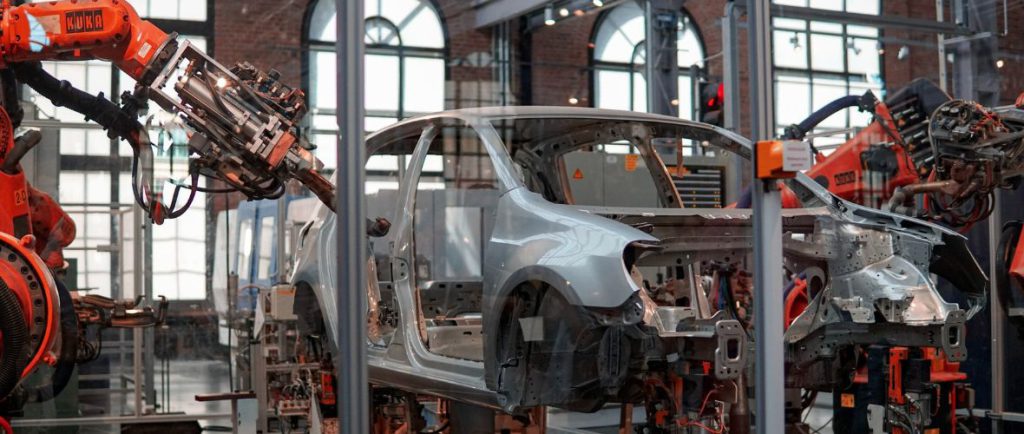The Future of Automotive Technology: Understanding the S to 3S Shift
As we move towards a world that is more connected and technology-driven, the automotive industry has also been revolutionized by the power of innovation. The shift from traditional cars to self-driving vehicles, electrification, and shared mobility services has been termed as the S to 3S shift. With this change comes a new era of possibilities for drivers everywhere. In this blog post, we will explore what this transformation entails and how it will impact our daily lives in ways we never thought possible. So buckle up and get ready to dive into the future of automotive technology!
Introduction to the S to 3S Shift in Automotive Technology
As we move into the future, the automotive industry is shifting from traditional combustion engine vehicles to electric vehicles. This shift is referred to as the S to S Shift, with S standing for software and 3S standing for sensors, semiconductors, and software.
This shift is being driven by several factors, including the need for more efficient and environmentally-friendly vehicles. Electric cars are much more efficient than combustion engine cars, and they produce zero emissions.
The S to S Shift will have a major impact on the automotive industry, and it’s important to understand what it means for the future. Here’s a quick introduction to the S to S Shift in automotive technology:
Sensors: Sensors are becoming increasingly important in automobiles. They’re used for everything from detecting obstacles in the road to automatically adjusting a car’s headlights. As cars become more autonomous, sensors will play an even bigger role in their operation.
Semiconductors: Semiconductors are used in electronic components like sensors and computers. They’re essential for making sure that these components can operate properly.
Software: Software is what allows all of these electronic components to work together. It’s responsible for things like controlling a car’s brakes or managing its battery life.
What is the S to 3S?
S to S is a shift from the current automotive technology stack of sensors, software, and services, to a new stack that includes semiconductors, software, and services. This shift is being driven by the increasing demand for better and more affordable automotive electronics.
The current automotive technology stack is based on an ecosystem of suppliers that provide sensors, software, and services to automakers. This ecosystem has been refined over many years and has resulted in a high degree of fragmentation and duplication of effort. The S-to-S shift will result in a consolidation of this ecosystem into a smaller number of suppliers that can provide all three components – semiconductors, software, and services – to automakers.
This consolidation will allow for greater innovation in the automotive space as well as cost savings for automakers. In addition, the S-to-S shift will enable new business models such as subscription-based models and pay-per-use models.
Benefits of the S to 3S Shift
The automotive industry is on the brink of a major shift – from the traditional internal combustion engine (ICE) to a new generation of electrified vehicles. This shift, often referred to as the S to 3S shift, will have far-reaching implications for the future of transportation.
There are many reasons why this shift is taking place. Increasing concerns about climate change and air pollution are leading to stricter emissions regulations around the world. At the same time, advances in battery technology are making electric vehicles more practical and affordable for consumers.
The S to 3S shift will bring several benefits for both consumers and the environment. Electric vehicles are much more efficient than ICE vehicles, meaning they use less energy and produce fewer emissions. They also require less maintenance and are generally cheaper to operate over the long term.
Perhaps most importantly, electric vehicles offer a cleaner, quieter, and more comfortable driving experience. As more people switch to electric cars, we can expect to see fewer traffic jams and less noise pollution on our roads and highways.
In short, the S to 3S shift is an exciting development that holds great promise for the future of transportation.
Challenges of the S to 3S Shift
The S to 3S shift is one of the biggest challenges facing the automotive industry today. The change from internal combustion engines to electric vehicles is a massive undertaking and one that will require a lot of investment and cooperation from all stakeholders.
Several challenges need to be overcome to make this shift successful. Firstly, there needs to be a significant increase in the number of charging points for electric vehicles. This infrastructure needs to be put in place before customers will feel confident making the switch to electric cars.
Secondly, the price of electric vehicles needs to come down significantly if they are going to compete with traditional petrol and diesel cars. Government incentives can help bring down the cost of ownership, but ultimately it is up to manufacturers to produce more affordable EVs.
Thirdly, range anxiety needs to be addressed. Electric cars still have relatively short ranges compared to their petrol and diesel counterparts, and this is off-putting for many consumers. Tesla has made great strides in this area with its long-range Model S, but other manufacturers need to follow suit if EVs are going to become mainstream.
Finally, public awareness needs to be raised about the benefits of electric vehicles. Many people are still unaware of how EVs work and what advantages they offer over traditional petrol and diesel cars. Education campaigns can help change this, but it will take time for EVs to truly enter the public consciousness.
Examples of How Automakers are Adopting the 3S Model
There are many examples of how automakers are adopting the 3S model. One example is Ford’s use of 3D printing to create prototypes and parts for its vehicles. Another example is General Motors’ investment in autonomous vehicle technology. Lastly, Tesla is using data collected from its vehicles to improve its products and services.
The Future of Automotive Technology with S to 3S
The automotive industry is in the midst of a major shift, from traditional internal combustion engine (ICE) vehicles to electrified vehicles. This shift is being driven by several factors, including increasing fuel efficiency standards, declining battery costs, and improving vehicle performance.
One of the most important aspects of this shift is the move from lead-acid batteries to lithium-ion batteries. Lithium-ion batteries are significantly more energy-dense than lead-acid batteries, meaning that they can store more energy in a given space. This enables electric vehicles to travel further on a single charge and reduces the overall cost of ownership.
Another important aspect of the shift to electrification is the move from 2S (two-speed) transmissions to 3S (three-speed) transmissions. 3S transmissions are more efficient than 2S transmissions and enable electric vehicles to better utilize their available power. This results in increased range and improved performance.
The final aspect of the shift to electrification is the move from AC (alternating current) motors to DC (direct current) motors. DC motors are more efficient than AC motors and provide better torque delivery, resulting in improved acceleration and performance.
Overall, the shift from ICE vehicles to electrified vehicles is a positive one. Electrified vehicles are more efficient, have lower operating costs, and offer improved performance compared to their ICE counterparts. This shift will continue in the coming years as battery technology continues to improve and become more affordable.
Conclusion
In conclusion, the future of automotive technology is looking bright with the shift from S to 3S. This shift will allow us to move away from traditional combustion engines and towards a more efficient electric-powered system that can offer many benefits such as improved fuel efficiency, lower emissions, and increased safety features. With this mind shift, drivers everywhere need to stay informed about emerging automotive technologies so that they can make educated decisions when purchasing their next car.


